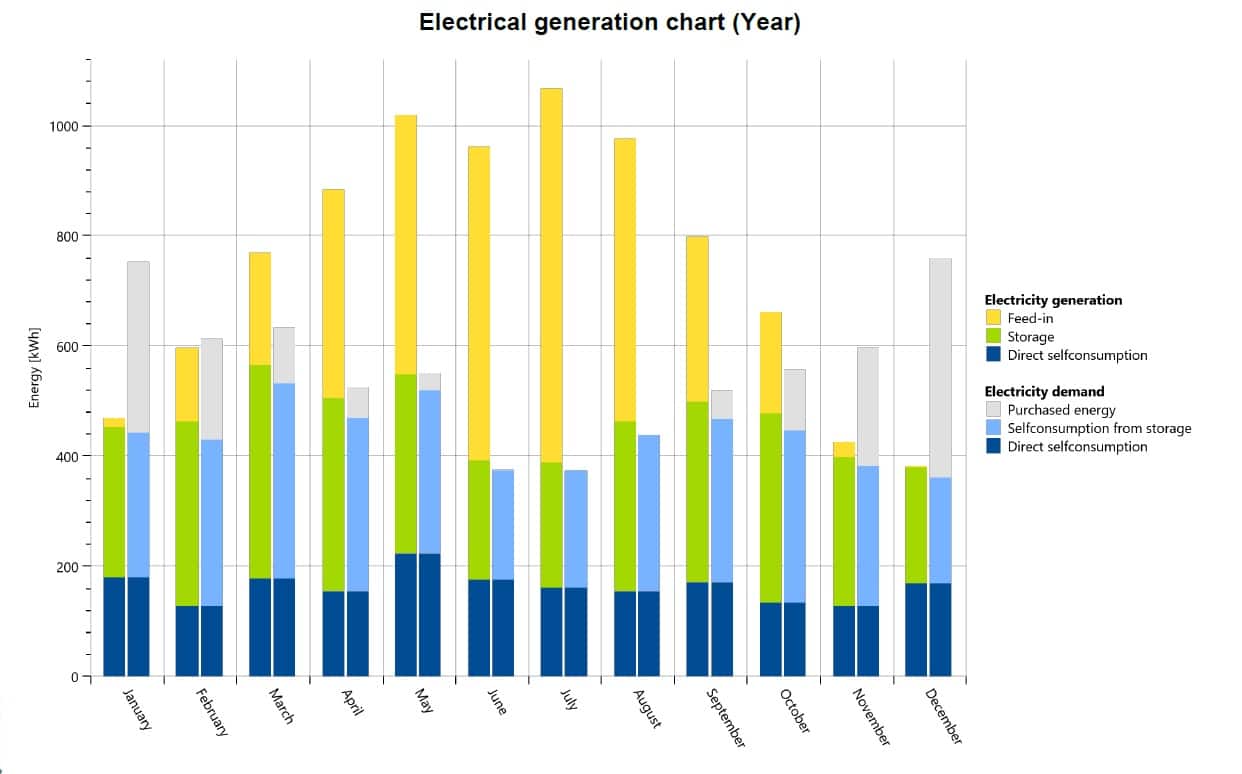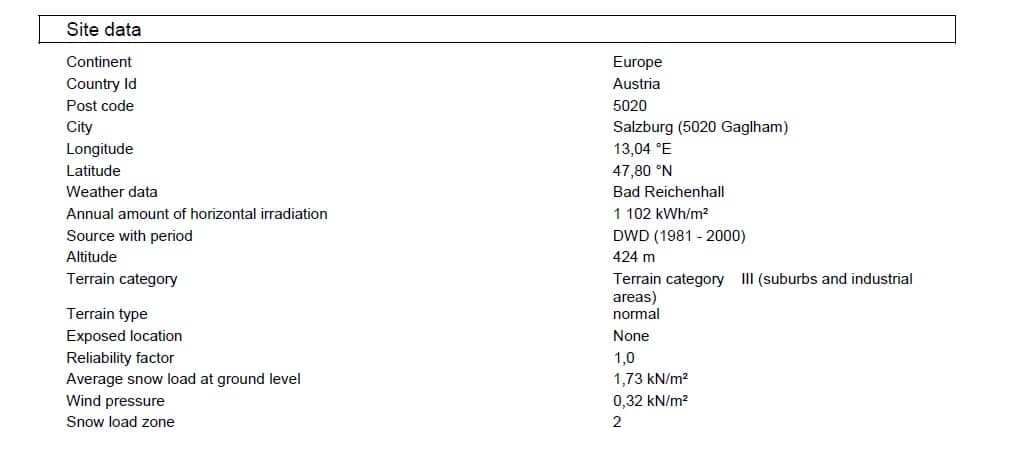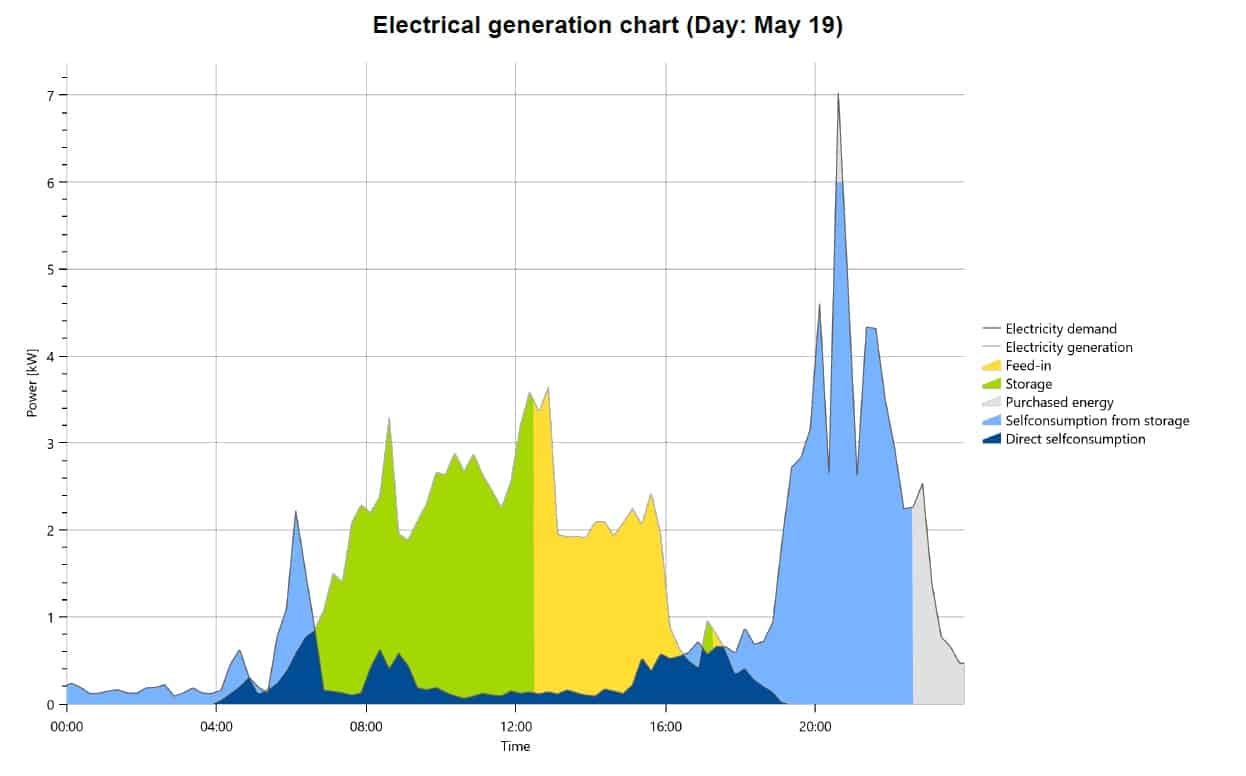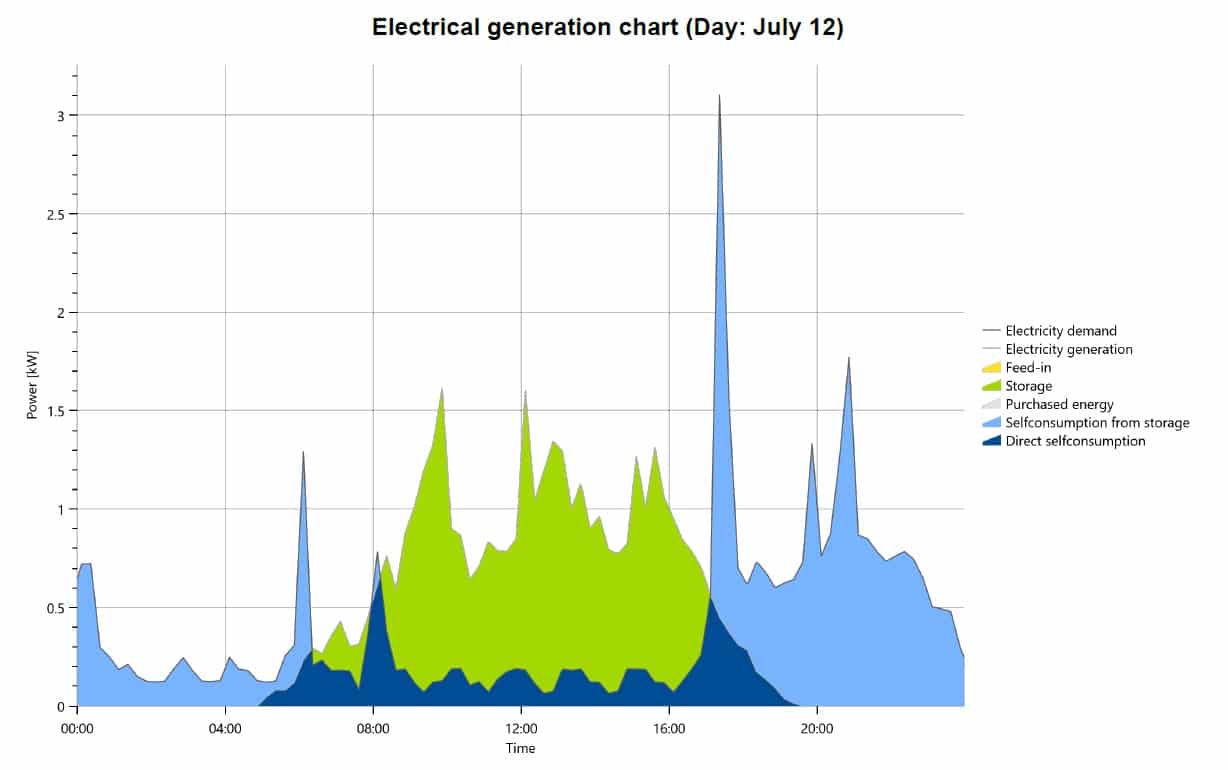As the world becomes more conscious of the impact of fossil fuels on our environment, renewable energy solutions like solar power are gaining popularity. However, solar panels alone cannot provide reliable power 24/ 7 as they are dependent on the availability of sunlight. This is where battery storage comes in. By storing excess solar energy during the day, batteries can provide power to your home during the night or when there is no sunlight.
But what’s the cost of going off-grid with solar and battery storage? The answer depends on several factors, including the size of your home, your energy needs, and the availability of sunlight in your area. The initial cost of installing a solar panel system with battery storage can be high, but over time, it can provide significant savings on energy bills. Additionally, many states and utility companies offer incentives and tax credits for homeowners who invest in solar and battery storage. High quality solar panel system with battery 10 kWp 20 kWh costs:
- 1500-2800 USD per hybrid 3-phase inverter
- 400-600 USD/kWh for low voltage battery (Li-Ion are cheaper 20-30% than LFP)
- 600-900 USD/kWh for high voltage LFP battery
- other additional costs:
- cables
- ATS- Automatic transfer switch (for DG -Diesel Generation)
- Bypass – on/off-grid switch
- DC/DC controller
- EMS system
- BMS system
- Monitoring Module
- Meter
- HVAC
Another factor to consider is the lifespan of the batteries. Lithium-ion batteries, which are commonly used in solar installations, have an average lifespan of around 10 years. However, the cost of replacing the batteries can add up over time. It’s important to factor in the cost of battery replacement when considering the overall cost of a solar + storage system.
Despite the initial investment, solar with battery storage can provide an affordable, sustainable energy solution for your home in the long run. By reducing your reliance on the grid, you can potentially save on energy bills and contribute to a cleaner, more sustainable future.
Table of contents:
- The Benefits of Solar with Battery Storage: Why it’s Worth the Investment
- Factors Affecting the Cost of Solar with Battery Storage
- Incentives and Tax Credits: How to Save Money on Your Solar + Storage System
- Lithium-Ion Batteries: Understanding the Lifespan and Replacement Costs
- Household Energy Usage Profile Analysis: How it Can Help Optimize Solar with Battery Storage Systems
The Benefits of Solar with Battery Storage: Why it’s Worth the Investment
Solar energy is becoming increasingly popular as more people become aware of its benefits, including its ability to reduce carbon emissions and save on energy bills. However, the effectiveness of solar panels is limited by their dependency on sunlight. This is where battery storage systems come in.
When combined with solar panels, battery storage systems can store excess energy generated during the day, providing a reliable source of energy during periods of low sunlight or at night. Althouggh installing a solar panel system with battery storage requires a significant upfront investment, there are numerous benefits that make it a worthwhile investment.
One of the main advantages of solar with battery storage is that it can significantly reduce your reliance on the grid. This means that you’ll be less affected by power outages or fluctuations in energy prices. In addition, by storing excess energy, you’ll be able to use that energy when it’s most convenient for you, rather than being limited to using energy only when the sun is shining.
Another benefit of solar with battery storage is the potential to save money on energy billls. By reducing your reliance on the grid, you’ll be able to lower your energy bills and potentially even sell excess energy back to the grid.
Furthermore, solar with battery storage is an environmentally friendly choice. By using renewable energy sources, you’ll be reducing your carbon footprint and contributing to cleaner , more sustainable future. This is especially important as we become increasingly aware of the negative impact of fossil fuels on the environment.
Factors Affecting the Cost of Solar with Battery Storage
It’s important to understand the factors that affect the cost of solar with battery storage, as well as the long-term benefits that come with this investment.
The first factor that affects the cost of solar with battery storage is the size of the system needed to power your home. The size of the system depends on several factors, including the size of your home, your energy needs, and the availabillity of sunlight in your area. The larger the system, the more expensive the initial investment.
Another factor that affects the cost of solar with battery storage is the type of batteries used. Lithium-ion batteries are the most commonly used type of battery for solar energy storage. They are more expensive than other types of batteries, but they offer a longer lifespan and higher efficiency, making them a good investment in the long run.
The location of your home also plays a role in the cost of solar with battery storage. The availability of sunlight in your area will affect the size of the system needed, and the local regulations and incentives offered by your state or utility company will also impact the overall cost.
Finally, the cost of installation and maintenance should also be taken into consideration. The installation cost can vary depending on the complexity of the installation and the skill level of the installer . It’s important to choose a reputable installer who has experience in solar energy installations. Ongoing maintenance is also necessary to ensure the system is functioning efficiently, and this can add to the overall cost of solar with battery storage.
Incentives and Tax Credits: How to Save Money on Your Solar + Storage System
Incentives and tax credits offered by state and federal governments can significantly reduce the cost of installation and provide long-term savings.
One of the most significant incentives for solar with battery storage is the Federal Investment Tax Credit (ITC). The ITC offers a 26% tax credit on the cost of installation, which can significantly reduce the upfront cost of installing a solar energy system with battery storage. Homeowners who install solar with battery storage in 2021 and 2022 can take advantage of this tax credit.
Many states also offer incentives for solar with battery storage installations. These incentives can vary widely depending on the state and utility company, but they can include cash rebates, net metering, and property tax exemptions.
In addition to incentives and tax credits, solar with battery storage can also provide long-term savings on energy bills. By reducing your reliance on the grid, you can potentially lower your energy bills or even sell excess energy back to the grid. Over time, these savings can add up and help offset the initial investment in the solar energy system with battery storage.
When considering incentives and tax credits for solar with battery storage, it’s important to do your research and understand the specific incentives offered in your area. Additionally, it’s important to choose a reputable installer who has experience with solar energy installations and can help you navigate the incentive and tax credit application process.
In 2018, the European Union (EU) adopted the Clean Energy Package, which sets ambitious targets for renewable energy production and energy efficiency by 2030. As part of this package, the EU introduced regulations to encourage the deployment of renewable energy systems, including solar with battery storage!!!
Several countries in Europe have also introduced their own incentives and policies to promote the adoption of solar with battery storage. For example, Germany has a feed-in tariff system that incentivizes homeowners to install solar energy systems and sell excess energy back to the grid. France offers a tax credit for homeowners who install solar energy systems with battery storage, while the Netherlands provides a subsidy for the installation of solar panels.
In addition to government incentives, the falling cost of solar panels and batteries has made solar with battery storage a more affordable option for homeowners in Europe. According to a report by SolarPower Europe, the cost of solar panels has decreased by 90% over the past decade, while the cost of lithium-ion batteries has decreased by 80%.
Despite the growth in adoption of solar with battery storage in Europe, there are still challenges to be addressed. One of the main challenges is the intermittent nature of solar energy, which requires the use of battery storage systems to provide reliable energy. Additionally, the availability of sunlight can vary widely across different regions of Europe, which can impact the effectiveness and efficiency of solar energy systems.
Lithium-Ion Batteries: Understanding the Lifespan and Replacement Costs
The lifespan of a lithium-ion battery depends on several factors, including the quality of the battery, how frequently it is used and charged, and the conditions in which it is stored. On average, lithium-ion batteries used in solar energy systems have a lifespan of around 10 years.
Replacing a lithium-ion battery can be expensive and can add to the overall cost of a solar energy system with battery storage. The cost of replacement depends on the size of the battery and the complexity of the installation. Additionally, the cost of replacement can vary widely depending on the manufacturer of the battery and the installer used.
To maximize the lifespan of a lithium-ion battery, it’s important to follow best practices for battery maintenance. This includes avoiding overcharging or undercharging the batttery, avoiding exposure to extreme temperatures, and keeping the battery clean and free of debris.
Fortunately, the decreasing cost of lithium-ion batteries has made solar with battery storage a more affordable option for homeowners. Additionally, several manufacturers offer warranties and guarantes for their batteries, which can provide additional peace of mind and protection against unexpected replacement costs. In your energy sto rage you can use LFP battery too! Learn more LiFePO4 vs Li-ion.
Household Energy Usage Profile Analysis: How it Can Help Optimize Solar with Battery Storage Systems
Analyzing the household with an 8.56 kWp solar system and an annual usage of 6,700 kWh, we see that without an energy storage system, the degree of independence is only 29.27%. This means that the household is only able to generate 29.27% of its annual energy usage through the solar panels alone.
However, with the addition of a 13.8 kWh energy storage system, the degree of independence jumps to 77.96%. This means that the household is now able to generate and store a much larger percentage of its own energy, reducing reliance on the grid and potentially saving money on energy bills.
By analyzing the household’s energy usage profile, we can optimize the solar with battery storage system to better meet the household’s needs. For example, we can identify peak energy usage periods and adjust the system to store energy during low usage periods, allowing the household to use stored energy during high usage periods when solar production is low.






